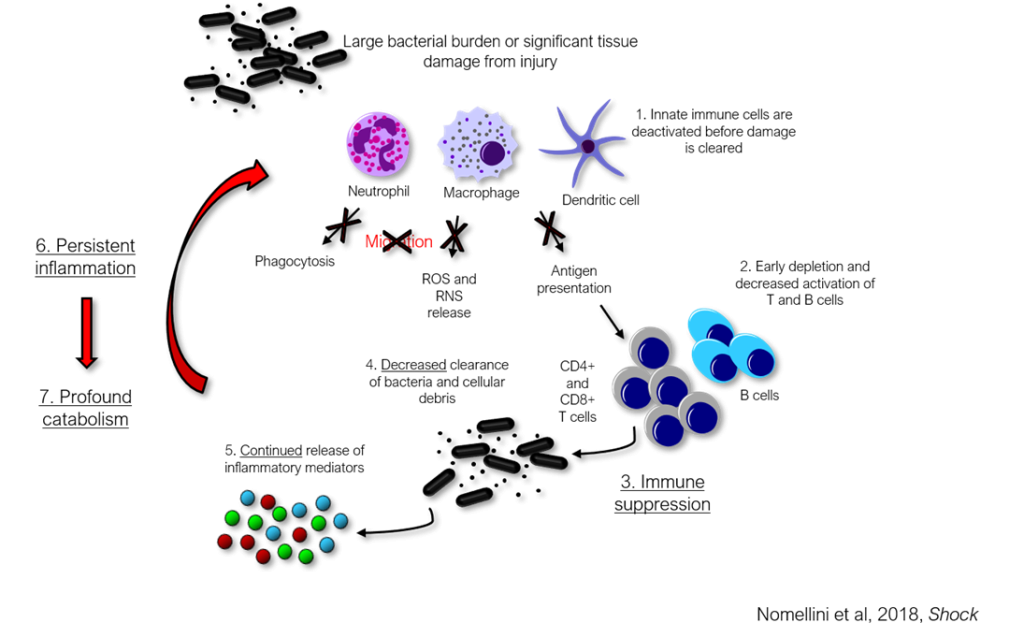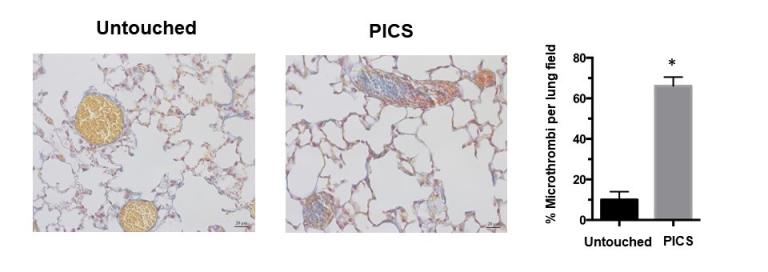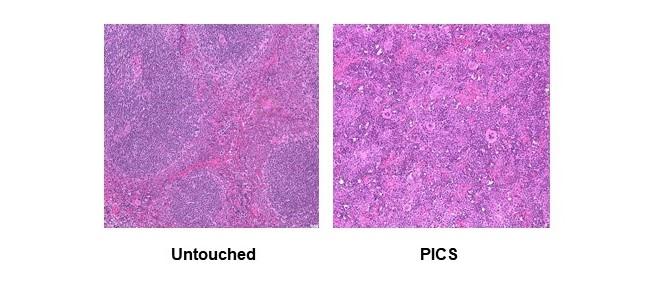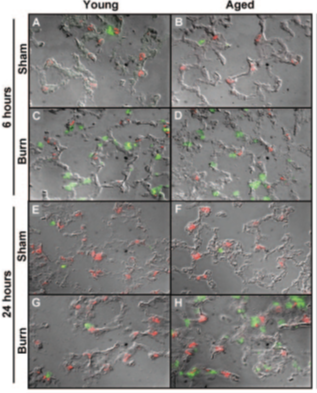Nomellini Lab Overview
While mortality rates for critically ill patients suffering from trauma, sepsis, and burn injury have significantly declined, many patients progress to a state of chronic critical illness, requiring ICU stays of weeks to months. The recovery period for these ICU survivors is often fraught with multiple complications, substantial disability, and long-term neurocognitive deficits.
The main risk factor for the development of chronic critical illness is the degree of immunosuppression that can occur. Another term for this state is the Persistent Inflammation, Immunosuppression, and Catabolism Syndrome (PICS). The theory behind PICS is that, when there is a significant burden of invading bacteria and/or a substantial amount of tissue injury, the immune system becomes overwhelmed. This then leads to global suppression of the immune response, with changes seen in both the first line of defense against invading pathogens (the innate immune system) and the more advanced, pathogen-specific response (the adaptive immune system). Many have been able to show this immunosuppressed state in critically ill patients, but no one has been able to reverse this response.
Our lab examines: 1) the interaction between the innate and adaptive immune responses that occur after injury or infection, and 2) the heterogeneity of the immune responses that occur in each individual to develop personalized immune therapies to reverse the immunosuppression that can occur in ICU survivors. Ultimately, we hope to minimize the development of chronic critical illness and improve the outcomes of this complex patient population.
The Persistent Inflammation, Immunosuppression, and Catabolism Syndrome (PICS)
Early and aggressive management has significantly improved mortality after sepsis. However, we are finding that those who survive sepsis or septic shock may progress to a state of chronic critical illness and often develop PICS, which leads to poor outcomes, multiple complications, and prolonged recovery times. The mechanisms behind PICS, however, are not completely understood and no therapies for it currently exist. We have created the first murine model of PICS and are just beginning to learn the mechanisms behind the immunosuppression that occurs. It seems that early recognition and intervention may be the key to mitigating its progression.

- Nomellini V, Kaplan LJ, Sims C, Caldwell CC. 2017. Chronic Critical Illness and Innate Immune Paralysis: What Can We Learn from the Elderly, Septic, Injured, and Malnourished? Shock. 49:4-14.
- Pugh, AM, Goetzman, HS, Caldwell, CC, Nomellini, V. 2017. A Murine Model of the Persistent Inflammation, Immune Suppression, and Catabolism Syndrome. Int J Mol Sci. 18(8).
- Winer LK, Beckmann N, Veile RE, Goodman M.D., Caldwell CC, Nomellini V. 2019 Consumptive coagulopathy is associate with organ dysfunction during PICS. American Journal of Physiology-Lung Cellular and Molecular Physiology. E-published.
- Tobin JM, Gavitt BJ, Nomellini V, Dobson GP, Letson HL, Shackelford SA. 2020. Immunotherapeutic options for inflammation in trauma. J Trauma and Acute Care Surg. 89:S77-S82.
- Satarupa S, Caldwell CC, Nomellini V. 2020. Distinct neutrophil populations in the spleen during PICS. Frontiers in Immunology. 11:804.
- Winer LK, Salyer CE, Beckmann N, Caldwell CC, Nomellini V. 2020. Enigmatic role of coagulopathy among sepsis survivors: a review of coagulation abnormalities and their possible link to chronic critical illness. Trauma Surg Acute Care Open. 5:e000462.
Lung microthrombosis

Disrupted spleen anatomy

Aging and the Response to Injury and Infection
We determined that aging is associated with a dysregulated innate immune response that increases susceptibility to infection and injury. In particular, we found that aging significantly increases the systemic response to scald injury. After a small injury, young mice have a transient activation of their systemic innate immune response that rapidly clears. On the other hand, aged mice show persistent elevation in neutrophil sequestration in various tissues, as well as prolonged release of pro-inflammatory mediators, which is associated with an increased mortality rate. This dysregulation is partially a CXCR2-mediated event, likely related to systemic endothelial activation.


- Nomellini, V., Faunce, D.E., Gomez, C.R., Kovacs, E.J. 2008. An age-associated increase in pulmonary inflammation after burn injury is abrogated by CXCR2 inhibition. J Leukoc Biol. 83:1493-1501.
- Gomez, C.R., Nomellini, V., Baila, H., Oshima, K., and Kovacs, E.J. 2009. Comparison of the effects of aging and IL-6 on the hepatic inflammatory response in two models of systemic injury: scald injury versus i.p. LPS administration. Shock. 31:178-184.
- Nomellini V, Gomez CR, Kovacs EJ. 2009. Aging and models of injury, shock, and trauma. Shock, invited review. 31:11-20.
- Gomez, C.R., Karavitis, J., Palmer, J.L., Faunce, D.E., Ramirez, L., Nomellini, V., Kovacs, E.J. 2010. Interleukin-6 contributes to age-related alteration of cytokine production by macrophages. Mediators Inflamm. 2010: 475139.
- Nomellini, V., Brubaker, A.L., Mahbub, S., Palmer, J.L., Gomez, C.R., Kovacs, E.J. 2012. Dysregulation of neutrophil CXCR2 and pulmonary endothelial ICAM-1 promotes age-related pulmonary inflammation. Aging and Disease. 3:234-247.
- Rice TC, Nomellini V, Pugh AM, Whitacre BE, Seitz AP, Edwards MJ, Gulbins E, and Caldwell CC. 2017. Sphingosine rescues aged mice from pulmonary Pseudomonas infection. J Surg Res. 219:354-359.
Join Our Lab
If you have an interest in the research that we are conducting and would like to be considered for a position in the lab, please send an email including your CV and a letter of interest to Vanessa Nomellini, M.D., Ph.D.